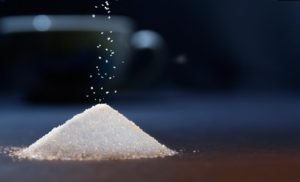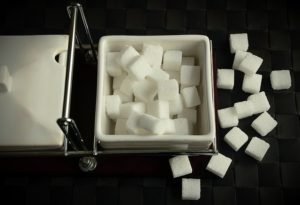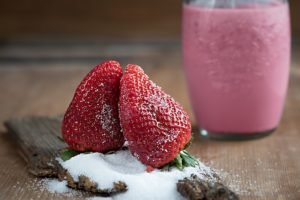Did you know that every can of Coca-Cola contains 9.5 teaspoons of sugar and that chocolate bars, on average, contain 7 teaspoons of sugar? The National Institute of Health recommends that children should not have more than 6 teaspoons per day and that those under the age of 9 should be limited to 3 teaspoons per day. If just one sugary drink and a sweet snack can bust the sugar bank, just how much sugar are children having these days?
What’s in the average lunch box?
For most moms, packing their children’s lunchbox is second nature. In goes a whole-wheat peanut butter sandwich, a cup of applesauce, and a fruit punch: fiber, fruit, and hydration- check! The problem is, a simple lunch like this also contains 75 grams of sugar, which equates to 16 teaspoons and more than 166% of the daily recommended limit!
Why is sugar such an issue?
According to a research team from the Emory University School of Medicine in Atlanta, exceeding 6 teaspoons of refined cane sugar per day can be considered a danger to the health of your children, being linked to causing obesity, diabetes, ADHD, and multiple health problems. Due to this, they recommend that children under the age of 2 should have absolutely no refined sugar in their diet, with only pure fruit sugar allowed. 
Dr. Miriam Vos, a pediatrics professor at the University, says: “Children who eat foods loaded with added sugars tend to eat fewer healthy foods, such as fruits, vegetables, whole grains and low-fat dairy products that are good for their heart health.” He adds that there is little room for junk food items and treats when children are getting the right number of calories from the correct nutritional sources.
How many calories do children need?
Sedentary 2-year-old children need approximately 1000 calories per day, while active 14 to 18-year-old girls need 2400 calories per day and active boys between 16 and 18 need 3200 calories per day.
6 teaspoons of sugar (24 grams) equate to about 100 calories, which means that it should only account for 3-4% of daily intake. That means cutting sodas, sweets, and treats down to a minimum, possibly refining it to a once-weekly treat.
The World Health Organization (WHO), Food and Drug Administration (FDA) and the 2015 Dietary Guidelines for Americans confirm that added sugars should account for less than 10% of total daily calories. 
For simplicity, Dr. Vos and his associates have recommended a limit of 6 teaspoons per day for all children aged 2-18, which makes it easier for all parents and public health advocates to monitor.
Why is there so much added sugar around?
A panel of experts completed a comprehensive review of scientific research to uncover the impact of added sugar on children’s health.
Their statement said: “For most children, eating no more than six teaspoons of added sugars per day is a healthy and achievable target. There has been a lack of clarity and consensus regarding how much added sugar is considered safe for children, so sugars remain a commonly added ingredient in foods and drinks, and overall consumption by children remains high- the typical American child consumes about triple the recommended amount of added sugars.”
Professor Vos said that children are starting to drink their own age in sugary drinks, especially because it’s become so readily available.
There is still a lack of research on the health risks associated with artificial sweeteners, which means that there are few recommendations for no-calorie sweeteners in your children’s diet. The high sugar content in 100% fruit juice is also still being studied to see whether it has the same effects as refined cane sugar, also known as added sugar.
The key is to ensure that processed foods, such as donuts, cakes, sweets, sodas, and jellies are cut down, and that whole foods like fruits, vegetables, proteins, and whole grains make up the daily tally of required calories. Whole foods contain plenty of fiber, which helps the body to process the natural sugars associated with it.
Junk food often contains little or no fiber, which is why the massive intake of sugar straight into the bloodstream has such dangerous health consequences. The daily sugar limit for adults is 30 grams, or 7.5 teaspoons of sugar, which should be easy to maintain in a household containing plenty of natural produce.
Sources:
https://www.nhs.uk/Livewell/Goodfood/Pages/sugars.aspx
https://www.bmj.com/content/320/7244/1240?
https://www.sciencedirect.com/science/article/pii/S0140673600040411
https://circ.ahajournals.org/content/121/11/1356.short
https://www.bmj.com/content/328/7450/1237.short
https://www.sciencedirect.com/science/article/pii/S0140673602096782







